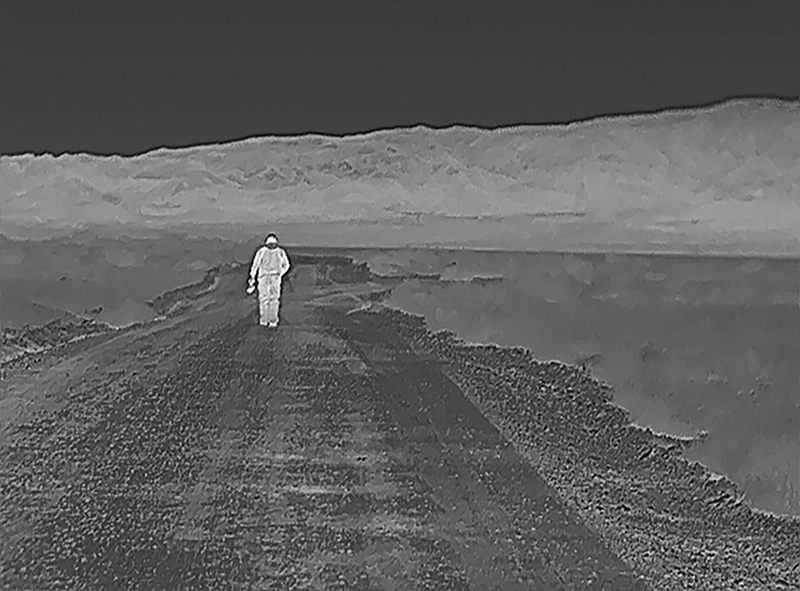
This product is not exportable outside the United States.
By adding this item to cart, you agree and acknowledge the Export Policy and confirm that you are a person in the United States with no intentions to illegally export the device.
This product is not exportable outside the United States.
By adding this item to cart, you agree and acknowledge the Export Policy and confirm that you are a person in the United States with no intentions to illegally export the device.


0

0


Night hunting is an addicting hobby that is becoming more popular across the United States. Hunters pursue animals like coyotes and hogs under the darkness of night. These animals are typically more active after sunset, making them ideal targets for night hunts. However, there is the obvious challenge of hunting at night, poor visibility can make it difficult to spot and accurately identify wildlife.
This is where thermal scopes become a game-changer for night hunters. Unlike regular scopes or night vision gear, thermal optics can detect heat. Every living creature emits heat to some degree, and these scopes can collect those heat waves and translate them into visible images. This technology allows hunters to see animals clearly in pitch-black conditions, dense brush, or even in foggy or rainy weather, where normal scopes might not work.
Moreover, modern thermal scopes have added features such as adjustable magnification, digital zoom, and even video recording capabilities. These features further enhance the hunting experience, offering versatility and effectiveness that traditional scopes can't match in a night hunting application.
Now that we understand the critical role thermal scopes play in the realm of night hunting, we’re going to take a deeper look into one key feature that significantly impacts its effectiveness: base magnification.
This aspect of thermal scopes dictates how large the target appears in the viewer and is a pivotal factor in choosing the right scope for your hunting needs. In the following sections, we'll explore what base magnification really means, how it influences your hunting experience, and how to choose the best base magnification for specific hunting scenarios, such as coyote and hog hunting.
Definition and Basic Concept of Base Magnification
Base magnification in thermal scopes is a term that refers to the scope's ability to enlarge the image of a target as seen through the lens. Essentially, it's how much bigger the scope makes something look compared to seeing it with your own eyes. For example, at the same distance; a scope with a 2x base magnification will make an animal appear twice as large as it would to the naked eye.
In the image below you can see a comparison of one image with a 35mm lens with a 2x base mag next to a thermal scope with a 60mm lens with a 3x base magnification. Both images were taken 50 yards away. Notice the difference in image detail and field of view.
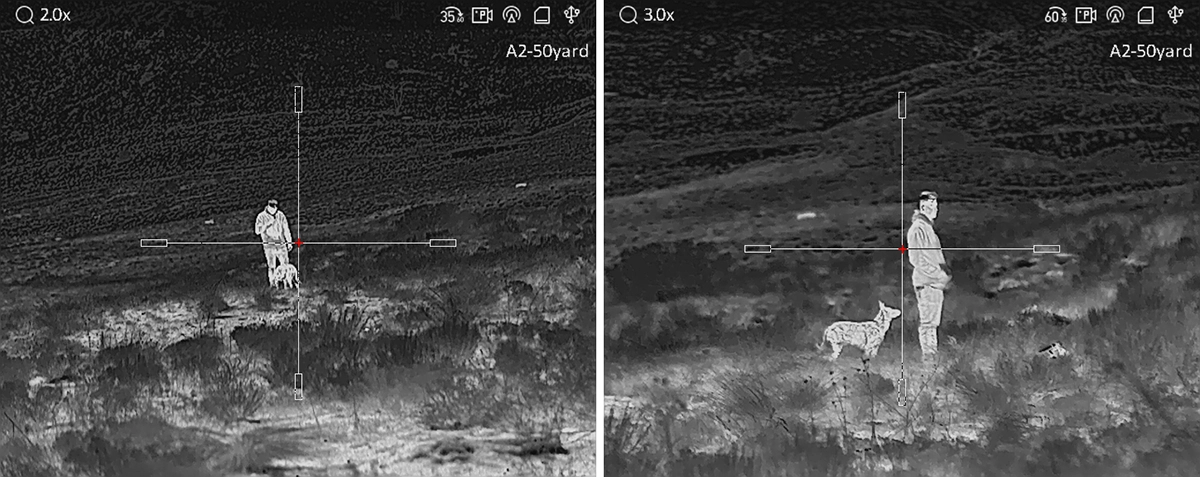
This magnification is inherent to the scope's design and is determined by the combination of the scope's lenses and its internal electronics. Unlike digital zoom, which can be adjusted to zoom in further on an image, base magnification is fixed. It sets the starting point for any additional zooming capabilities the scope might have.
Importance of the Base Magnification in Your Thermal Scope, Handheld, or Clip-on
In night hunting, base magnification is crucial for several reasons:
As magnification increases, the clarity of the image can decrease. This is due to the spreading of the thermal sensor's pixels over a larger area. Therefore, finding the right balance between magnification and image clarity is key.
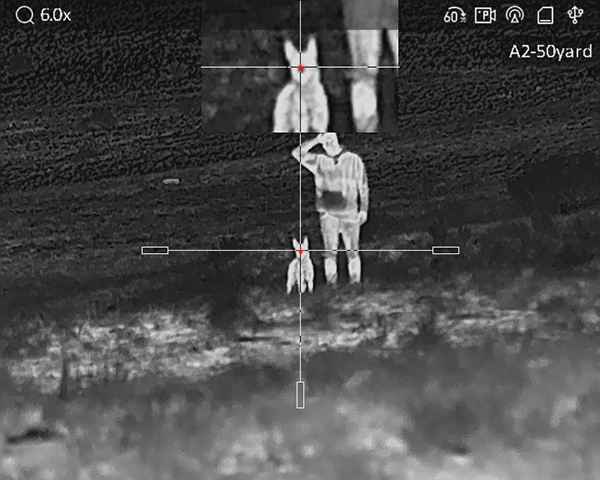
These next sections will explore the best way to select the best base magnification for different hunting scenarios, ensuring you have the right tool for your specific needs.
Which lens size should I choose for my thermal scope?
Base Magnification and Field of View
The relationship between base magnification and field of view (FOV) is one of the most crucial aspects to understand in thermal imaging and night-hunting optics. Here's how they are interconnected:
Hunting Applications
For hunters, this information is vital. A wide field of view is beneficial for scanning large areas and tracking moving targets, while higher magnification is better for identifying and shooting at distant targets. Choosing the right balance based on your hunting needs is going to be one of the most important things.
(Hunting Lifestyle photo, or maybe a through-device photo of a single coyote at a distance next to a through-device photo of a group of hogs in the trees.)
Lens Size and Its Impact
The size of the lens in a thermal scope also plays a significant role in determining both the base magnification and the field of view:
Considerations for Hunters
Hunters must consider the terrain and typical engagement distances when choosing lens size. For instance, a smaller lens with a wider field of view might be more advantageous in dense forests or for close-range hunting.
In open terrains for long-range targeting, a larger lens with higher magnification might be preferable.
Ultimately it comes down to the specific things you need for your own setup and terrain. We’ve got an awesome network of authorized AGM thermal dealers across the world. Don’t hesitate to reach out to a dealer in your area to get some hands-on experience with the different available models so you can pick out the best option!
Conclusion
In this guide, we’ve explored the vital role of base magnification in thermal scopes for night hunting. We've seen how it influences field of view, image clarity, and overall hunting success. Key takeaways include:
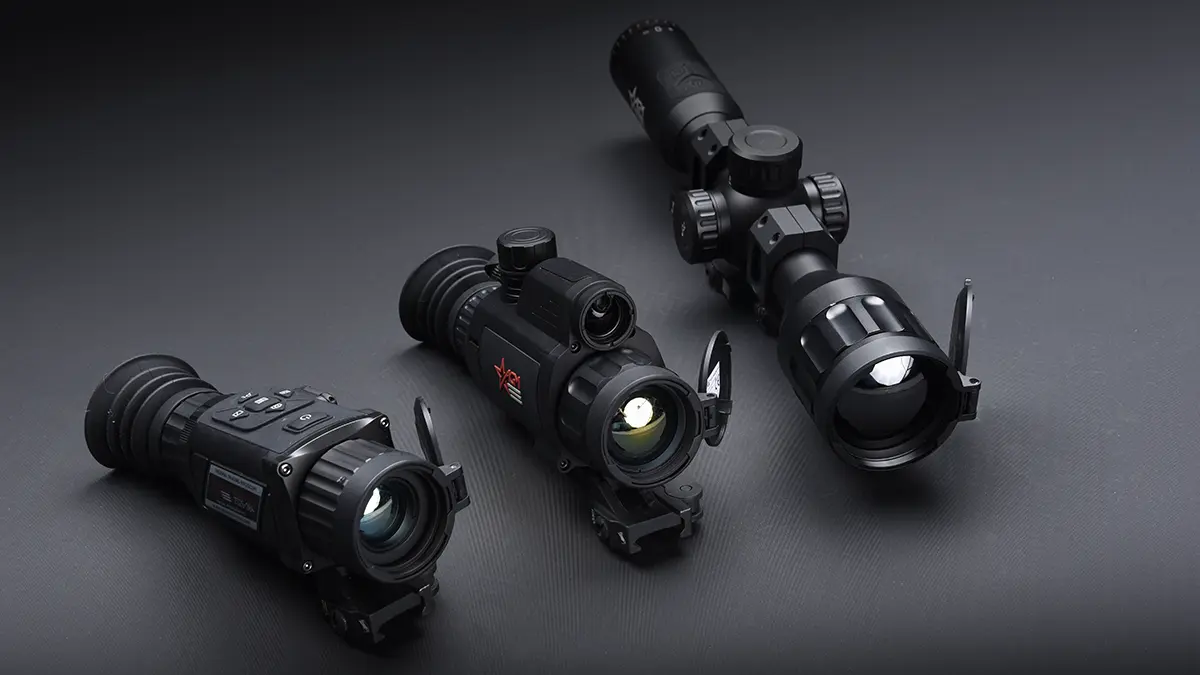
We encourage you to apply this knowledge to enhance your night-hunting experiences. Remember, the right thermal scope with the ideal base magnification and quality can really make a HUGE difference.
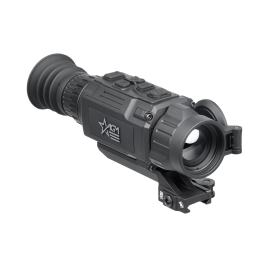
$3,295.00
-266x266.png)
$3,845.00
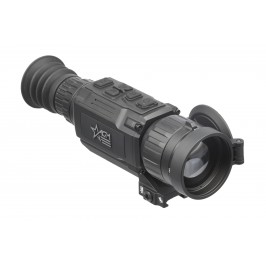
$2,745.00
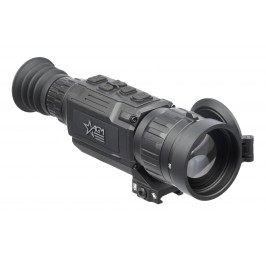
$4,395.00
Table of contents